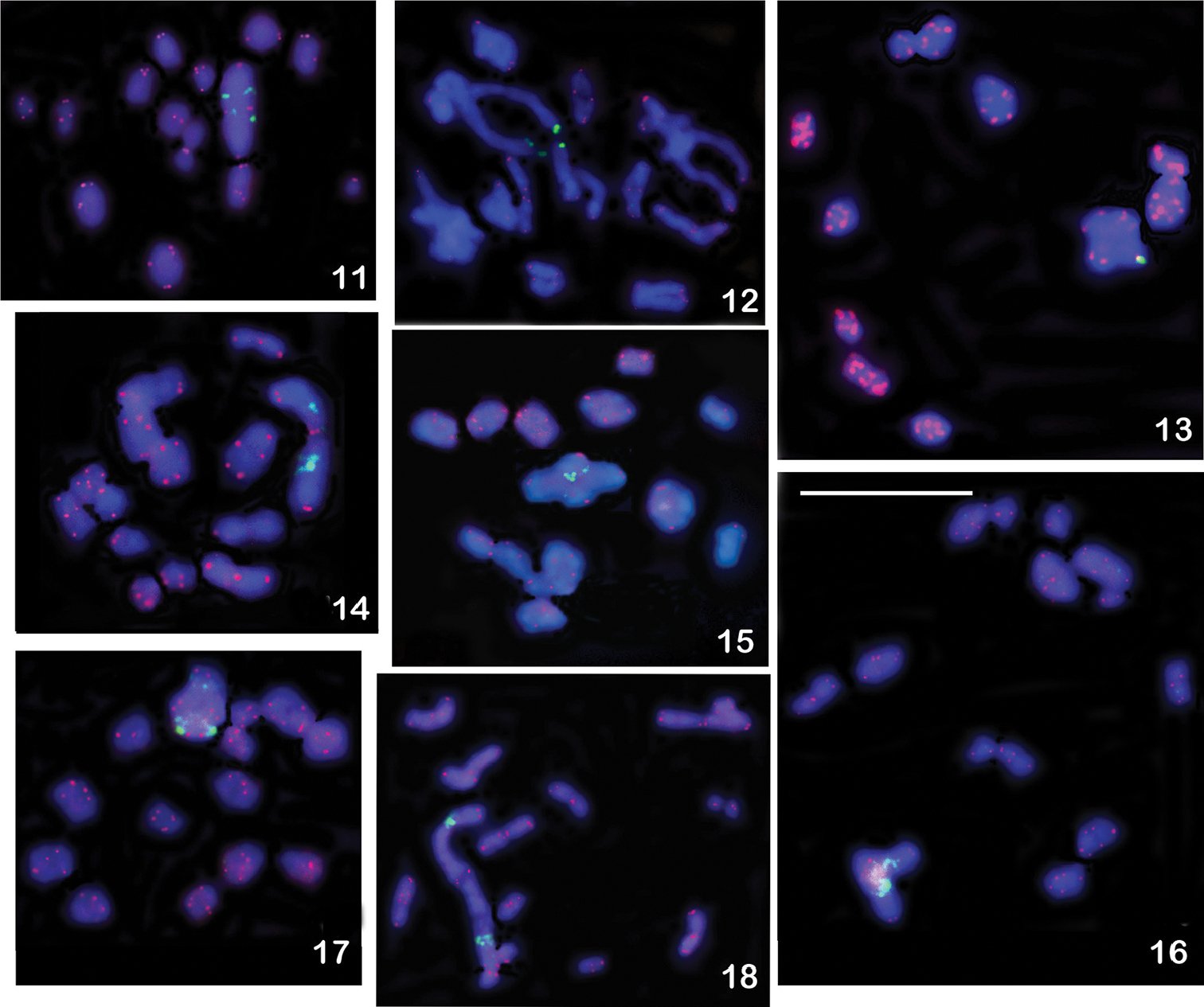
|
||
|
FISH with rDNA (green signals) and telomeric (TTAGG)n (red signals) probes on male meiotic karyotypes of eleven Issidae species (n = 13 bivalents + X). The rDNA clusters are seen on the largest autosomal pair, located interstitially in all species with the exception of Issus lauri (Figure 13) and Zopherisca tendinosa (Figure 20) with the terminal location of these clusters. 11 Agalmatium bilobum, metaphase I 12 A. flavescens, diplotene-diakinesis transition 13 Issus lauri, metaphase I 14 Kervillea basinger, metaphase I 15Mycterodus (Semirodus) pallens, metaphase I 16 Palaeolithium distinguendum, metaphase I 17 Scorlupella discolor, metaphase I 18 Thabena sp., metaphase I. Scale bar = 10 µm. |